The Revelation of Animal Mimicry When Ancient Egyptians Recently Unearthed the Method of Mummification and Discovered its Materials and Techniques. The ancient Egyptians rediscovered mummification by leaving the corpse out in the hot sand covered with sunlight, as it was found that the corpse did not decompose quickly.
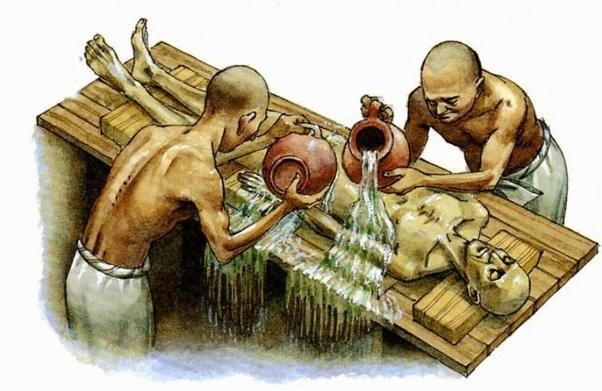
The Beliefs and Practices of Ancient Egyptian Life After Death
The ancient Egyptians firmly believed in the concept of the afterlife and the resurrection of the body, ensuring the soul’s journey to the beyond. To attain eternal life, they engaged in elaborate burial practices and rituals. These included mummification to preserve the body, intricate burial tombs, and the recitation of sacred texts to guide the deceased on their voyage through the underworld. Each evening, as the sun descended below the western horizon, it symbolized the rebirth of the soul, allowing it to rise again the following day. This profound belief in the cycle of life, death, and rebirth continues to fascinate and captivate people worldwide.
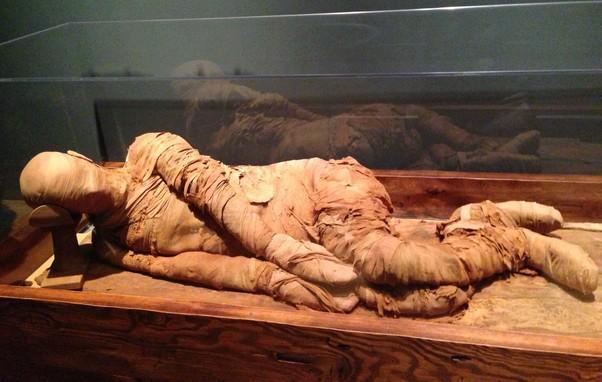
Dive into a captivating exploration of the comprehensive examination of Ancient Egyptian mummification practices, delving into ancient Egyptian procedures while also touching on broader aspects of mummification across cultures. By delving into various dimensions of this intriguing funerary tradition, our goal is to correct common misconceptions. Furthermore, our global expedition aims to reveal fascinating facts about ancient Egyptian mummification that may surprise and challenge our understanding.
Curious about history’s enigmatic embalmers? Immerse yourself in the captivating list of Famous Ancient Egyptian Mummies. Uncover a curated list of these remarkable relics, each holding secrets of a rich civilization. Embark on a journey of discovery and trace the steps of the past through these remarkable archaeological treasures.
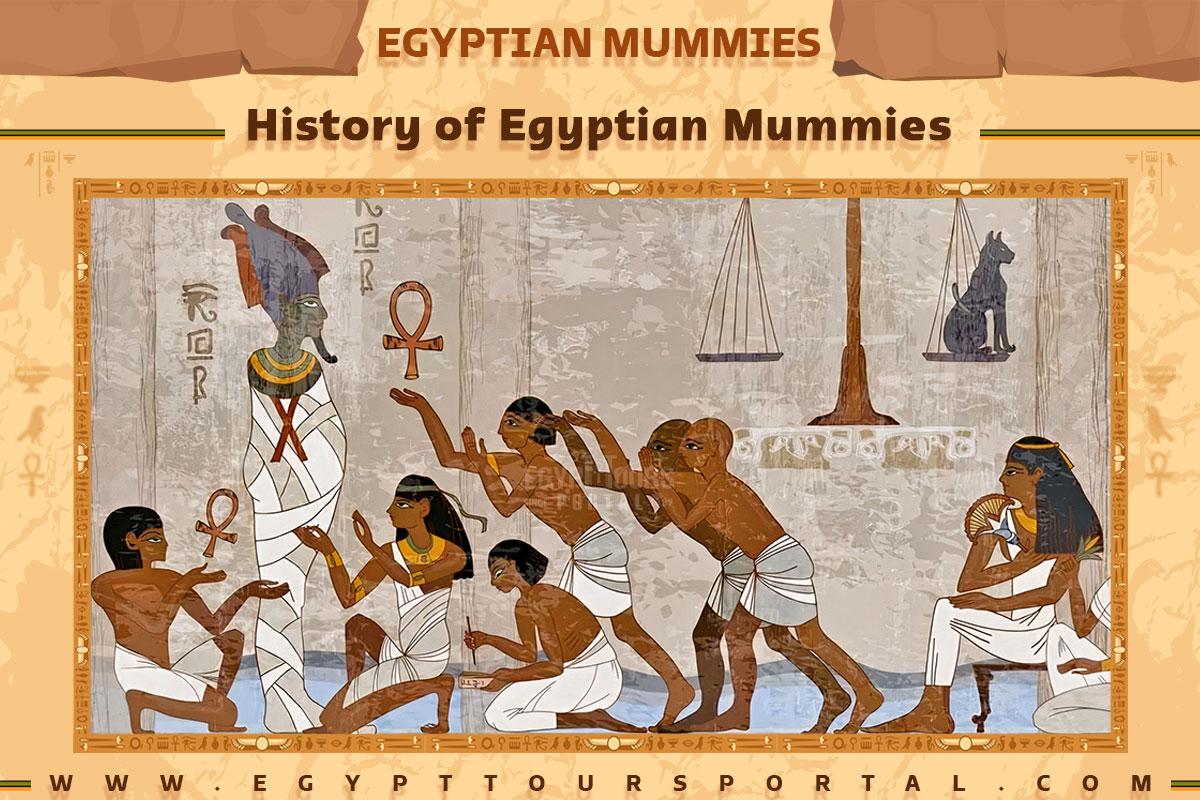
Egyptian Mummies: Epic Tales Preserved
The ancient Egyptian practice of mummification was deeply rooted in the distant history of ancient Egypt. The key began with the mummies occurring in the prehistoric times when the air and dry sands preserved many bodies in dug shallow pits. In the 4th and 5th dynasties about 2600 BC, ancient Egyptians began to mummify their bodies according to their religious teachings. The art of mummification was perfected during the Third Intermediate Period (1070 – 712 BC). Over the next 2000 years, the art of mummification continued and developed all the way to the Roman Period (30 BC – 364 BC). With each period, the mummification quality changed to meet the requirements of the time.
The practice of mummification reached its pinnacle during the sophisticated and advanced society of the 18th and 20th dynasties of the New Kingdom of Egypt (1550 – 1070 BC). In the later period, around 450 BC, the great historian Herodotus documented the intricate mummification process. The Mummification process faded away during the 4th century when Rome ruled Egypt as a Christian nation, leading to the abandonment of the mummification process. Many scholars and historians believe the mummification process at its zenith can be found among the many elements of the process that could be found in the way current people honor their loved ones.

The intricate procedure of Mummification Unveiled – Egyptian Expedition in Petals.
Before the mummification process evolved to its finest form, the corpse was put in a pit in the desert in a fetal sleeping position with all their precious personal items. All the water would be absorbed from the body, dried, and put in jars to better preserve the mummified body. The internal organs were removed, dried, and put in jars to better improve the mummification process.
The process was perfected by skilled practitioners who expertly extracted the brain from the nostrils using an iron hook. This was a much more precise method compared to the previous practice of opening the head to remove the brain entirely. The cavity is thoroughly cleaned and filled with natron and myrrh to preserve the appearance of the abdomen. The body is sewn up and covered in natron bags for 70 days, during which it is dried, wrapped in linen bandages for 35 days to draw out all the moisture across all the tissues. The removed organs such as the lungs, liver, stomach, and intestines were then put in Canopic jars with dry natron, and the heart was left in the body, symbolizing intelligence.
The body was then filled with resins, sawdust, linen scraps, and Nile mud to make the body flexible. The Ancient Egyptians replaced the eyes with linen pads and small onion skins. In the Middle Kingdom, it became a standard to place a mask over the face of the mummy. Prayers from the Book of the Dead were added to the mummy to make his transition to the afterlife as safe and successful as possible.
The Steps of the Mummification Process:
Step 1: Insert a hook through a nostril hole to extract a portion of the brain.
Step 2: Make an incision on the body’s left side near the abdomen.
Step 3: Remove all the internal organs.
Step 4: Allow the internal organs to dry.
Step 5: Store the lungs, stomach, intestines, and liver in canopic jars.
Step 6: Return the heart to its original position within the body.
Step 7: Cleanse the interior of the body with a mixture of wine, herbs, and spices.
Step 8: Cover the dehydrated body with natron (salt) for precisely 70 days.
Step 9: After 40 days, fill the body with linen or sand to restore a lifelike form.
Step 10: At the conclusion of the 70-day period, wrap the body in bandages from head to toe.
Step 11: Place the wrapped body within a sarcophagus labeled “Ancient Egyptian Decorated Coffin.”
Final Step: If the individual held the status of a Pharaoh, they would be interred in an exclusive burial chamber decorated with scrolls from ancient Egyptian texts such as the Book of the Dead, along with abundant treasures that would assist them in their journey to the afterlife.
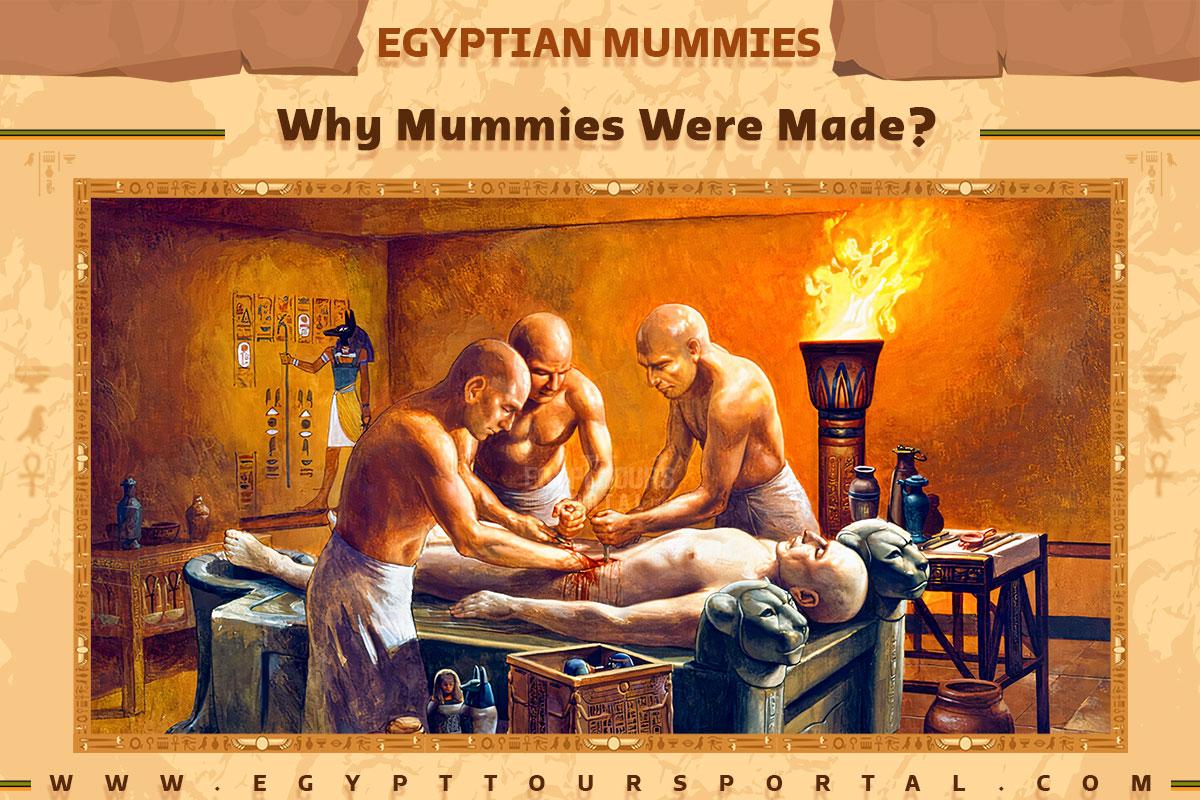
The Egyptian Mimicry Procedure – Egypt Tours Portal
The ancient Egyptians believed in life after death, and when a person dies, their spiritual essence still lives, and in order for the soul to survive, the body has to remain intact. They believed that the spirit is divided into parts: the Ka, Ba, and Akh. The Ka was considered the “Double” of the person, who would stay in the tomb, and offerings and objects were presented. The Ba, or the “Soul,” is free to fly out of the tomb at any time and returns and objects were presented and offerings were made. The Akh, or the “Spirit,” would travel through the Underworld with Anubis to attend the Final Judgment with Osiris and enter into the Afterlife.
The process of preserving the body and turning them into mummies was meticulously detailed in the pyramid texts accompanied by the story of Osiris’s death, where the universe fell into utter chaos, and the tears of the gods transformed into materials such as resins, honey, and incense used for the mummification process.
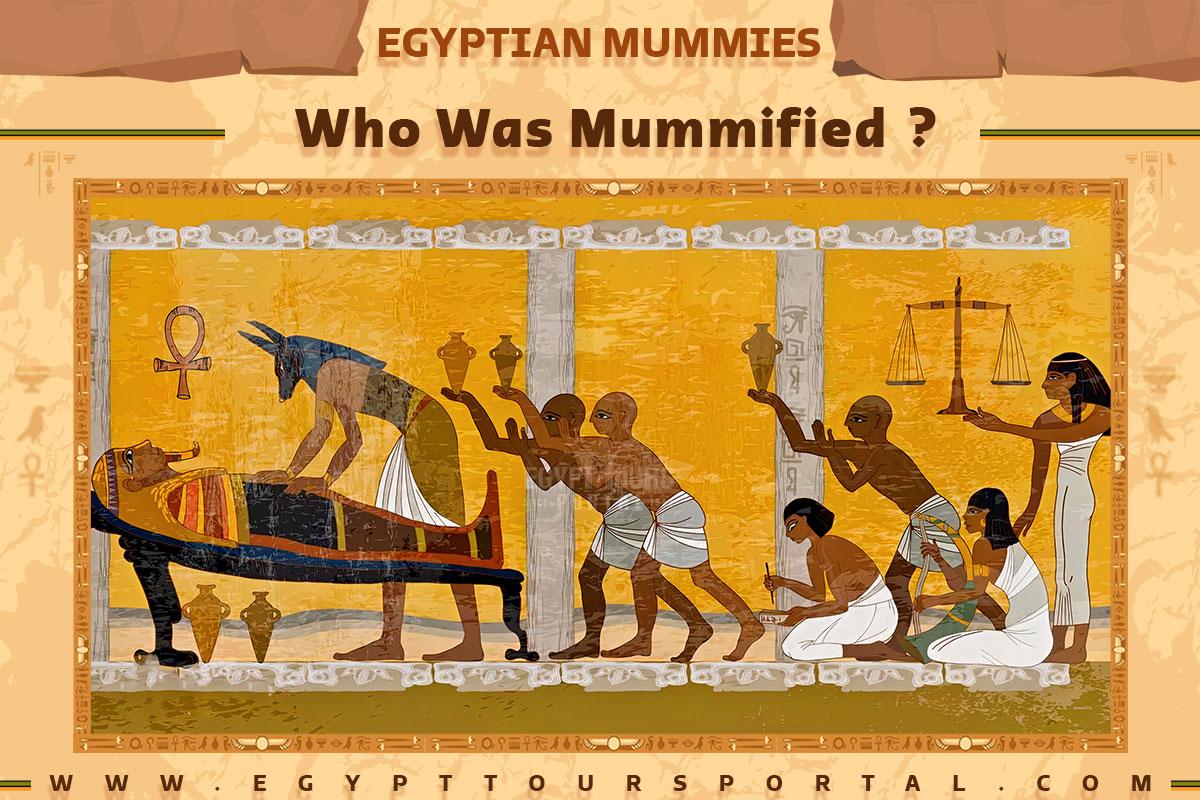
Who Was Mummified – Ancient Egyptian Texts Portal
The Pharaohs of Egypt after death were mummified and buried in a highly elaborated tomb to embrace their rightful place in the heavens with the ancient Egyptian deities. All members of royal hierarchy, royal families, societies, and nobility received the same service due to their recognition that was considered to be extensive. Many ancient Egyptians, for religious reasons, chose to mummify animals that were considered to be sacred such as bulls, cats, crocodiles, snakes, birds, and more.
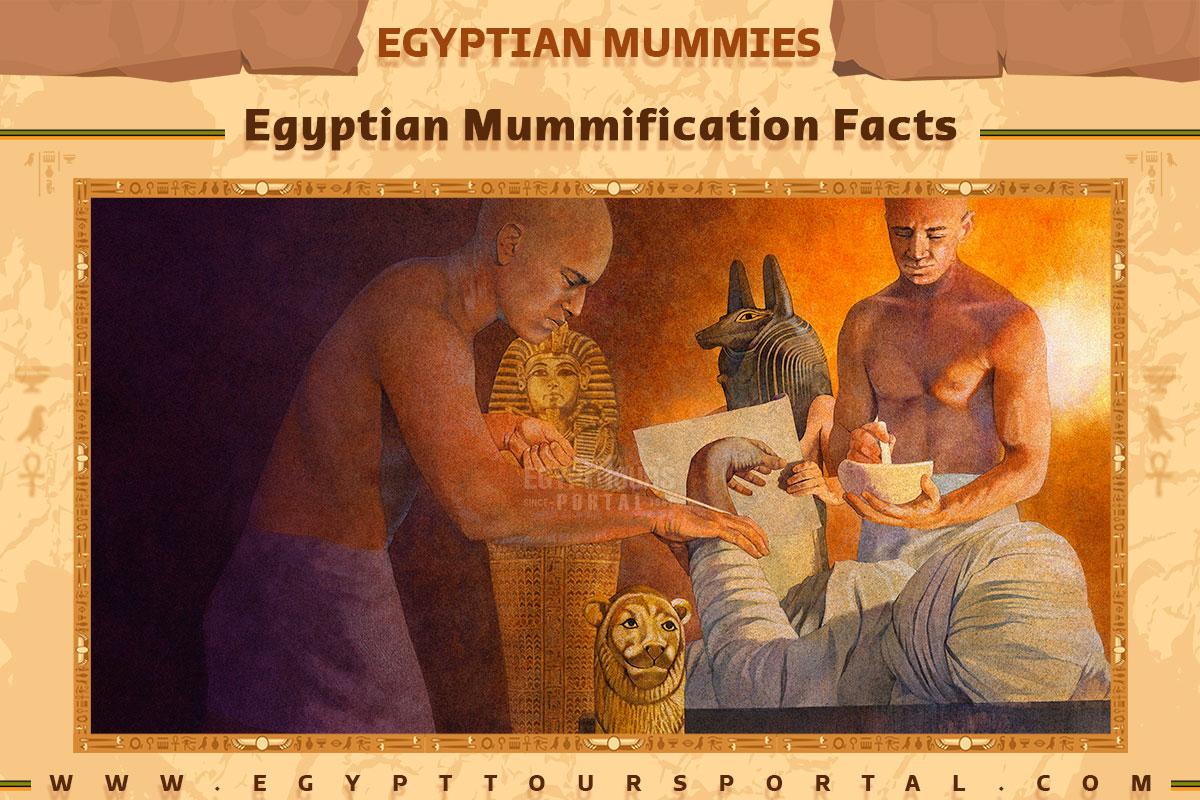
Facts About Ancient Egyptian Mummification – Egyptian Tourism Postcard
Fact 2: The practice of Ancient Egyptian mummification was very common and not limited to the rich or elite. While wealthy individuals underwent elaborate and expensive mummification processes carried out by professional embalmers, regular Egyptians had more basic methods. Even the poorest could afford a simple burial where the body was wrapped in linen and accompanied by the necessary spells for their journey to the afterlife. Archaeologists have discovered such burials all over Upper and Lower Egypt.
Fact 4: The brain, whose function was not well understood at the time, was discarded. Embalmers used a hook to extract bits of the brain through the nostrils. The cranial cavity was then rinsed and cleaned. The brain matter, considered unimportant, was not preserved. The body was wrapped meticulously in linen bandages, often exceeding 4,000 square feet for the most elaborate mummies, covering 40 days. Pharaohs might have been wrapped in linen that preserved details of gods, while common people used strips of fine linen. The Ancient Egyptians’ sarcophagus of the deceased were made of a number of materials like wood, stone, or even gold, which featured inscriptions about their life and achievements.
Fact 5: Animal mummies were also highly common, ranging from sacred animals to beloved pets, reflecting different religious beliefs and societal practices. It is worth noting that not all animals were worshipped as gods, while others were raised for sacrificial purposes like cats, ibises, and cows. Cats were revered as guardians, while dogs were known for their loyalty to their owners.
Fact 6: The concept of a “Mummy’s Curse” was not a modern invention but rooted in ancient Egyptian beliefs. Tomb inscriptions invoked the wrath of gods and even haunting by ghosts to protect the resting place of mummies, invoking the wrath of gods, and even haunting by ghosts if tomb robbers intruded. This belief reflected a fear of retribution from the spiritual realm rather than an actual curse placed on the mummies themselves.
In conclusion, ancient Egyptian mummification is a profound testament to their intricate beliefs and practices. It offers a window into their spiritual journey to the afterlife, showcasing remarkable craftsmanship and cultural insights. For an immersive experience, explore the wonders of ancient Egypt with Egypt Tours Portal. Delve into the rich history of mummification and beyond, guided by passionate experts who unlock the secrets of ancient Egypt’s past while providing seamless accommodation, letting you uncover the treasures of Egypt’s past while enjoying top-notch comforts.
Av𝚊il𝚊𝚋ilit𝚢: Ev𝚎𝚛𝚢𝚍𝚊𝚢



